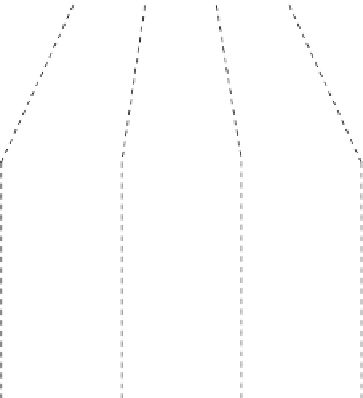Travel Reference
In-Depth Information
Figure 19.2
Decision levels in consumer decision-making (Decrop and Kozak 2009).
Those levels should be regarded as conceptual levels and not as hierarchical or sequential
levels.
The
generic decision
level involves non-comparable choices (Johnson 1984, 1986), e.g. spending
time on a holiday or repairing the house, going on holiday or buying new furniture. Some
studies have shown that the generic decision to go on holiday is not always considered fi rst, nor
is the destination decision considered in the last instance (Decrop and Snelders 2004). For
example, the growing phenomenon of last-minute booking means that the generic decision may
come after decisions are made on the timing of a holiday/trip. It is of interest to note that
tourism products compete not only with each other in terms of attracting potential clients, but
also with other products such as buying a new house, a new car or investing for education
(Sirakaya, McLellan and Uysal 1996).
In contrast with generic decisions, each holiday item at the level of
specifi c decisions
entails
comparable alternatives. Comparability is defi ned as the degree to which alternatives are
described or represented by the same attributes. Non-comparable alternatives have few attributes
in common, while comparable alternatives share the same attribute background. Since visitors
are confronted by a wide variety of destinations, more choices of accommodation, a diverse
range of activities and tours, it has become increasingly diffi cult for consumers to decide where
to go, how to go and where to stay (Laws 1995). Moreover, the sequence of specifi c decisions
appears to be a key issue, leading to dissonant results. For example, Fesenmaier and Jeng (2000)
and Hyde (2004) have found that the choice of travel route (a 'core' decision) often precedes
choice of attractions (an 'en route' decision), whereas King and Woodside (2001) suggested the
opposite. Of course, these specifi c choices are affected by a number of personal (e.g. previous
experience, position in the family life cycle, educational level, money and time resources),
psychological (e.g. motives, beliefs/images, attitudes, intentions, personality and lifestyle) and
environmental variables (e.g. product's pull factors).




















































